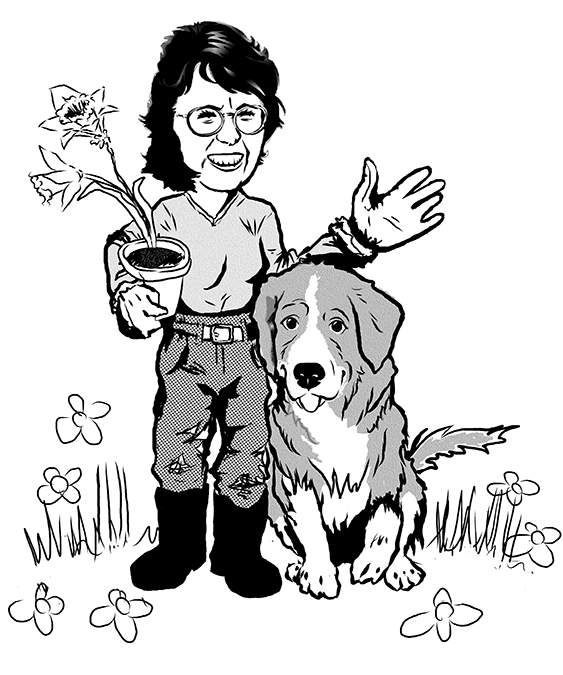Scrophularia auriculata ‘Variegata’
Otiorhynchus sulcatus – black vine weevil
Garden Tip: Adding compost the easy way
by Leslie Cox; Monday; November 29, 2021
An easy way to mix your compost into the soil is to spread it over your garden in late fall. Cover with a mulch of hay or chopped leaves and let nature take its course. Come spring, the winter weather and the soil organisms will have worked the compost in for you.
Garden Tip: Mulching young plants and trees
by Leslie Cox; Monday; October 25, 2021
If you have incorporated new plants in your landscape this last summer it is a good idea to cover them with mulch for protection against freezing temperatures.
The best mulch material is leaves. They are on the ground anyways, so it is easy to either rake them up and spread them over the garden beds, or run over them with the lawn mower and spread the leaf mulch over the plants.
If you do not have any deciduous trees on your property, ask or beg your friends, neighbours, family members if you can steal some of theirs.
If you do not have any access to leaves, bark is a good substitute. We prefer the fine bark mulch which is available from our local pole yard but you can also by bagged bark from your local nursery or big box store.
Straw is another good mulch option but most people prefer to use this material on their vegetable gardens rather than on their front yard garden beds. It sometimes cones down to aesthetics…and the rules in some development communities. Just be sure to buy straw and not old hay. Hay, even the old stuff, will still have viable seeds in it which you will wind up cursing next spring.
Whatever you use, spread your mulch material 4 – 6 inches (10 – 15 cm) thick over your plants. This will provide adequate protection against freezing temperatures.
One final tip…or warning…
Do not spread the mulch right up against the trunks of your trees, especially young trees, Best to leave a 6 inch (15 cm) gap around the base of the tree. Otherwise, you will be creating good camouflage for mice, squirrels and other chewing demons who like to chew on fresh tree bark.
Garden Tip: Rescue drowning plants
by Leslie Cox; Monday; October 18, 2021
 Be sure to check your potted plants after a heavy rainfall. Plants…any species that are not marginal (ie. those that prefer a spot by a pond or stream)…can develop crown rot if they are wallowing in a puddle of water in their pot.
Be sure to check your potted plants after a heavy rainfall. Plants…any species that are not marginal (ie. those that prefer a spot by a pond or stream)…can develop crown rot if they are wallowing in a puddle of water in their pot.
Here in the Pacific Northwest, crown rot is one of the main causes of plant deaths through the fall and winter seasons. (Sadly, we lost this beautiful saxifraga to crown rot two years ago.)
Take away the trays under the pots to allow for free drainage. Or, if there are no trays underneath but the plant is still water-logged, place a couple of wood blocks or flat rocks underneath the pot to raise it up off the ground. If the plant is still swimming in water, knock it out of the pot, check the drainage hole is not plugged and re-pot the plant with up to one-third sand or small grit added to the new soil mix to increase the drainage.







